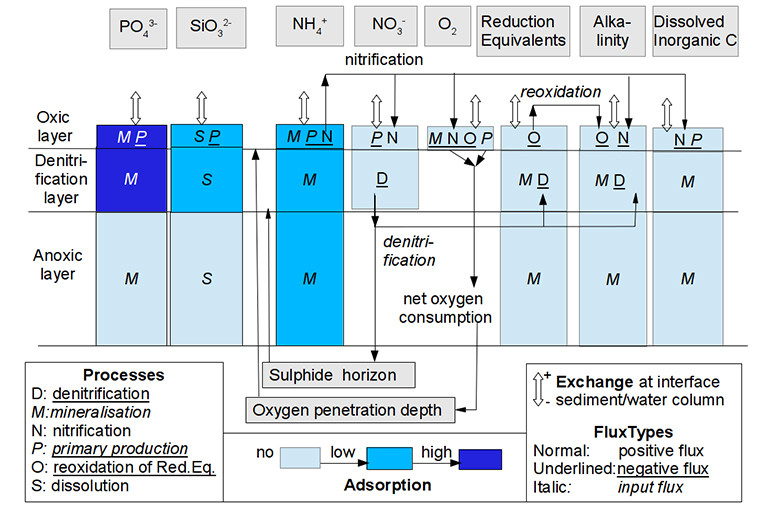Processes benthic nutrient model
The following processes are taken into account:
• Mineralization (M) : oxygen consumption, nutrient regeneration of ammonium and phosphate and anoxic mineralization by bacteria. The biological rates are calculated in the benthic food web model and are the main input to the diagenetic model. Nutrient regeneration occurs in all three layers, oxygen consumption obviously only in the aerobic layer, and anaerobic mineralization and the associated formation of reduction equivalents occurs both in the denitrification layer and in the anaerobic layer.
• Chemo-autotrophic nitrification (N) is performed by nitrifying bacteria: ammonium is oxidized to nitrate, oxygen is consumed, and CO2 is used to synthesise organic compounds. This process leads to a decrease of alkalinity.
• Particulate silicate dissolution (S). Dissolution depends on the sedimentation rate of particulate silicate (mainly diatom skeletons) and the saturation value of dissolved silicate in the sediment.
• Denitrification (D) occurs when anoxic mineralization of organic material takes place.
The nitrogen atoms in nitrate (NO3- ) have a valence of +5. After uptake of 5 electrons each, inert nitrogen gas (N2) is formed. Denitrification leads to a decrease of both reduction equivalents and alkalinity.
• Re-oxidation of reduced equivalents (O): oxygen is used for the oxidation of reduced components; it lowers the amount of reduction equivalents.
• Primary production by benthic diatoms (P): nutrient uptake (ammonium, nitrate, phosphate and silicate), CO2 (=DIC) uptake, O2 production.
